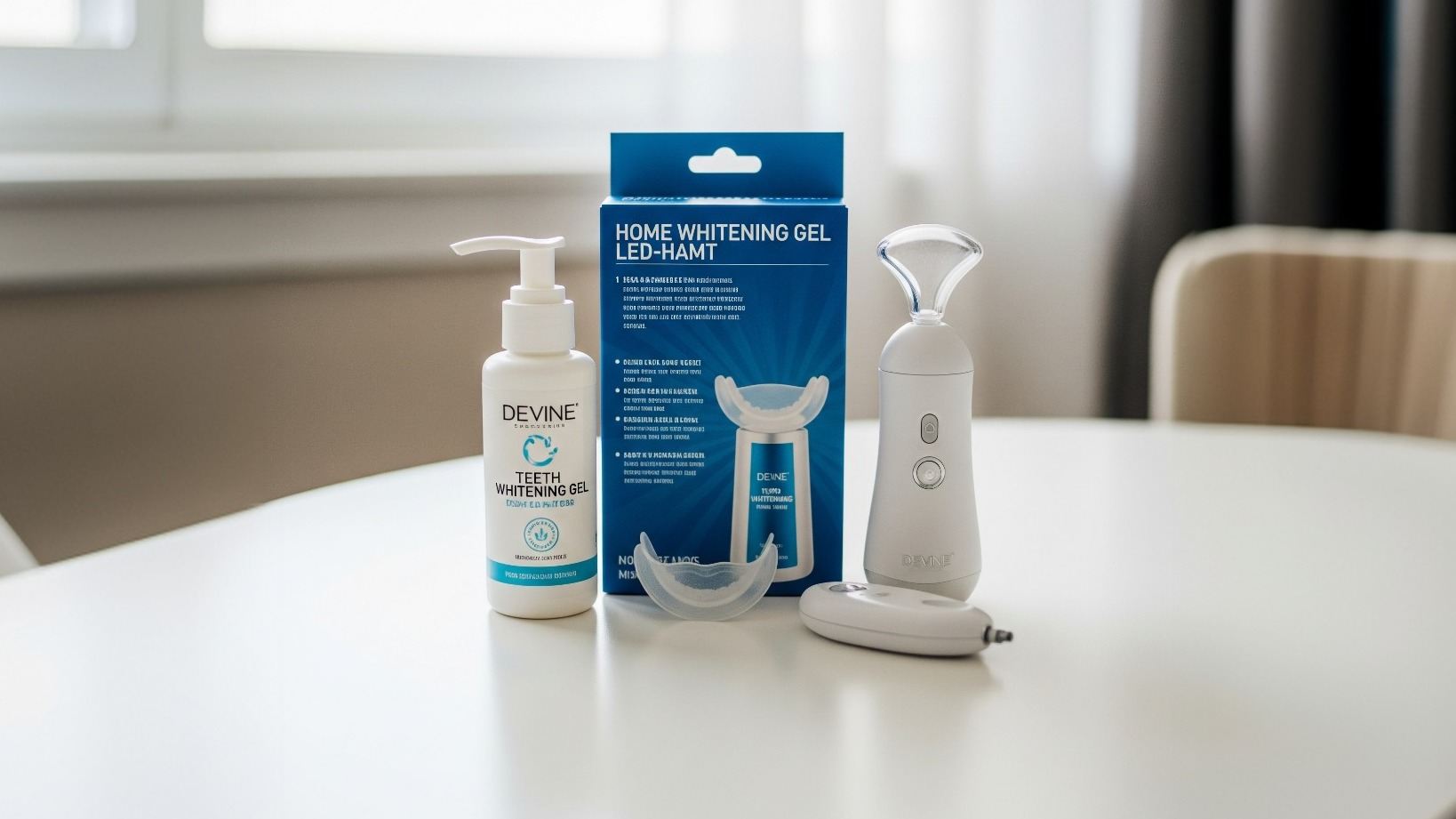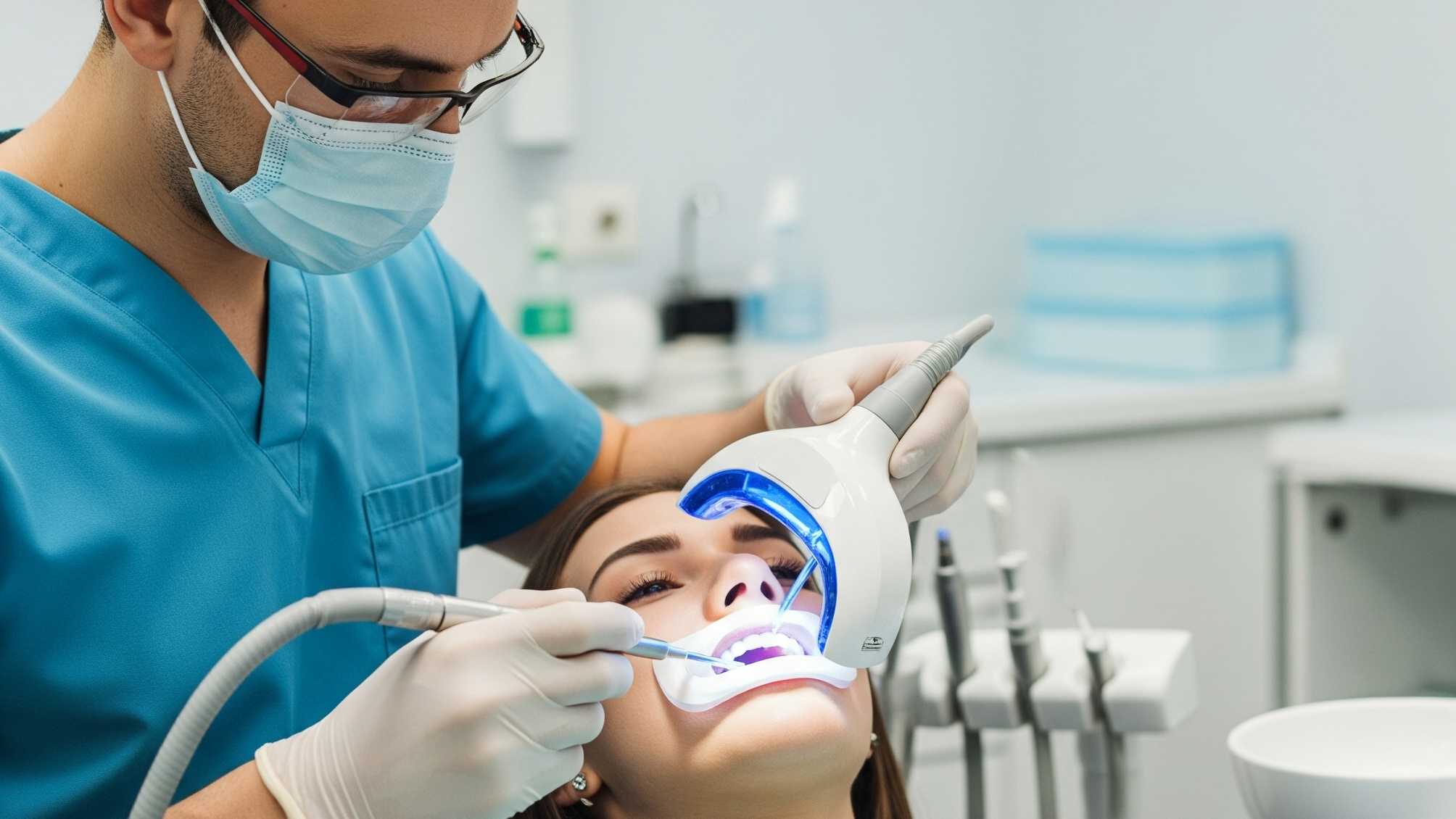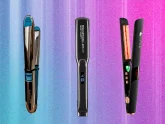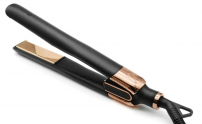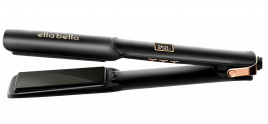Advertising Disclosure
Our team works hard to evaluate every product. If you click on links we provide, we may receive compensation.
Most Effective Teeth Whitening Methods: From Kits to Professional OptionsA bright, white smile is a universal symbol of confidence and health. This drives many people to explore teeth whitening products available today. From over-the-counter kits to professional treatments, the market offers numerous solutions to combat stains from coffee, wine, and aging.
At-home kits, including strips, gels, and LED devices, provide convenience and affordability. However, they vary significantly in effectiveness. Professional options like in-office bleaching or custom-fitted trays from dentists deliver faster, more dramatic results. These treatments come with enhanced safety under expert supervision.
Natural remedies like baking soda or charcoal are popular but lack scientific backing. They may actually harm enamel over time. Choosing the most effective method depends on your budget, desired results, and current dental health.
This article compares these approaches, highlighting their pros, cons, risks, and suitability. You’ll find the best way to brighten your teeth safely and effectively.
Understanding How Teeth Whitening Works: Science Behind the Smile
Tooth discoloration isn’t just a surface issue — it’s directly tied to tooth structure. Teeth have two key layers: enamel and dentin. Enamel is the hard, white outer layer that protects your teeth. Meanwhile, dentin is a yellower layer that sits underneath the enamel.
Stains can either sit on the enamel or penetrate deeper into the dentin below. Surface stains (called extrinsic stains) affect the enamel layer. Intrinsic stains go deeper into the dentin and are harder to remove.
The most effective teeth whitening products rely on active ingredients like hydrogen peroxide or carbamide peroxide. These chemicals break down into oxygen molecules that interact with staining compounds. This process either dissolves the stains completely or breaks them into smaller, less noticeable pieces.
Hydrogen peroxide acts quickly, making it ideal for fast results before special events. Carbamide peroxide releases its whitening power more slowly, offering a gentler approach for sensitive teeth.
There’s an important difference between removing surface stains and deep bleaching:
- Surface Stain Removal. Targets stains on the enamel, often caused by food, drinks, or smoking. These are easier to treat with basic whitening products and show results faster.
- Deep Bleaching. Reaches stains in the dentin that are much tougher to remove. These require stronger formulas or longer treatment times to see significant improvement.
What is the best teeth whitening kit? Several factors influence your results:
- Genetics. Some people naturally have whiter enamel or thicker dentin, which affects final results
- Lifestyle. Frequent consumption of staining foods or drinks makes stains return much faster
- Age. As enamel thins with age, dentin shows through more, making whitening more challenging
- Dental Health. Cavities, gum disease, or restorations like crowns can limit whitening effectiveness significantly
Understanding these factors helps explain why results vary between people. It also shows why choosing the right approach for your specific situation matters so much.
Hydrogen Peroxide vs. Carbamide Peroxide: Which Is More Effective?
The two main active ingredients in effective teeth whitening products that actually work are hydrogen peroxide and carbamide peroxide. They’re chemically similar but differ in strength, speed, and how they affect your teeth during treatment.
- Hydrogen Peroxide. This is the stronger, faster-acting option available today. At-home products typically use 3% to 10% concentrations for safety. Professional treatments can use up to 43% for dramatic results. It’s excellent for quick whitening before special events. However, it can cause sensitivity, especially when used too frequently or in high concentrations. It’s best for short-term use when you need fast results.
- Carbamide Peroxide. This ingredient breaks down into hydrogen peroxide but works much more slowly. It’s commonly used in trays or gels at 10% to 35% strength concentrations. It releases peroxide gradually over time, making it gentler on teeth and gums. This makes it better for people with sensitivity or for whitening over several weeks.
Always follow product instructions carefully to avoid irritation or damage. Check with your dentist if you’re unsure which option is best for your specific needs.
Is Teeth Whitening Safe? Common Myths and Scientific Truths
Many people worry that even those whitening kits that work harm teeth or cause lasting problems. Let’s debunk some common myths using guidance from the American Dental Association (ADA) and dental experts.
- Myth: Whitening damages enamel permanently. Truth: ADA-approved products with hydrogen or carbamide peroxide are safe for enamel when used correctly. Overusing products or choosing non-approved ones can weaken enamel over time. Stick to trusted, ADA-sealed brands for safety.
- Myth: Whitening causes permanent sensitivity that never goes away. Truth: Sensitivity is common during whitening but usually fades within a few days after treatment. Peroxide can temporarily irritate tooth nerves during the whitening process. Using lower concentrations or sensitivity-reducing products like Sensodyne can minimize discomfort significantly.
- Myth: All whitening products work exactly the same way. Truth: Only ADA-approved products are rigorously tested for safety and effectiveness before reaching consumers. Non-approved or DIY approaches like baking soda or lemon can be abrasive or completely ineffective.
Safety tips for teeth whitening at home:
- Consult your dentist first, especially if you have cavities, gum disease, or sensitivity issues
- Use products exactly as directed — never leave strips or gels on longer than recommended
- Avoid whitening if you have dental restorations like crowns or veneers (they won’t whiten and may cause uneven results)
- Stop treatment immediately if you experience severe pain or prolonged sensitivity
At-Home Teeth Whitening Kits: Do They Really Work?
At-home teeth whitening kits that work are incredibly popular because they’re affordable and convenient to use. These kits come in various forms, including LED trays, gels, pens, and whitening strips. Most rely on hydrogen peroxide or carbamide peroxide as their active ingredients.
Some newer kits use natural ingredients like coconut oil or activated charcoal for people with sensitivity concerns. While these natural options are gentler on teeth and gums, they’re significantly less effective for deep stains.
Types of At-Home Kits:
- LED Trays. These use special light to boost the peroxide gel’s effectiveness during treatment. Brands like Snow Diamond pair 10% hydrogen peroxide with an LED mouthpiece for faster results.
- Gel Trays. Pre-filled or custom trays hold peroxide gel directly against your teeth. Opalescence Go, with 10%–15% hydrogen peroxide, is a top choice for even coverage.
- Pens. These let you paint gel directly onto individual teeth for spot whitening. They’re great for touch-ups but can provide uneven coverage for full-mouth whitening.
Advantages of At-Home Top Teeth Whitening Kits:
- Convenience: Use them at home during your morning routine or while relaxing
- Affordability: Kits range from $10 to $100, making them much cheaper than professional treatments
- Accessibility: Available online or in stores with options for different budgets and preferences
Limitations of At-Home Kits:
- Slower Results: Lower peroxide concentrations mean it takes one to four weeks to see noticeable whitening
- Uneven Application: Strips or pens may miss spots, especially on crooked or crowded teeth
- Sensitivity: Overuse or high concentrations can cause temporary tooth or gum discomfort
Teeth whitening kit reviews consistently highlight brands like Crest 3D Whitestrips, Snow Diamond, and Opalescence Go as the most effective options. Crest’s Professional Effects kit uses 10% hydrogen peroxide and is praised for brightening teeth by two to four shades in 20 days.
Teeth Whitening Strips: Best Brands and Real-World Effectiveness
Whitening strips are what people consider one of the best choices for simple and effective tools for surface stains. These thin, flexible strips are coated with peroxide-based gel and applied for 30–60 minutes daily. Treatment typically lasts one to two weeks for optimal results.
Top Brands Available:
- Crest 3D Whitestrips Professional Effects. This at-home teeth whitening kit is ADA-approved. Users report teeth becoming two to four shades whiter in 20 days of consistent use. They’re affordable at $45–$50 but may slip if not applied carefully to clean, dry teeth.
- Lumineux Strips. Peroxide-free option using coconut oil and sage oil as active ingredients. They’re much gentler for people with sensitive teeth but less effective for deep stains. Priced at $40 for 14 treatments, making them competitively priced.
- Moon Dissolving Strips. These use 6% hydrogen peroxide and dissolve completely on your teeth, making them mess-free. They’re excellent for travel and cost about $30 for 20 strips.
Who are they best for? Strips work best for light surface stains and people who want a low-effort whitening option. They’re less effective for deep stains or people with very uneven teeth. If sensitivity is a major concern, look for lower-peroxide or peroxide-free strips like Lumineux.
Whitening Toothpaste and Mouthwashes: Do They Make a Difference?
Whitening toothpastes and mouthwashes play an important supporting role in at-home teeth whitening routines. They’re not strong enough to whiten teeth significantly on their own. However, they help maintain results after using a whitening kit or professional treatment.
- Toothpaste. These products use mild abrasives like silica to scrub away surface stains daily. Some contain low levels of peroxide (1%–2%) for additional whitening power. Brands like Colgate Optic White or Crest 3D White Brilliance are affordable ($5–$10) and ADA-approved. They’re excellent for daily use to prevent new stains from forming.
- Mouthwashes. These may contain hydrogen peroxide or optical brighteners to enhance tooth appearance. However, they don’t stay in contact with teeth long enough for deep whitening effects. Listerine Healthy White helps with maintenance but won’t replace strips or trays for actual whitening.
Best Uses for Teeth Whitening:
- Maintenance: Brush twice daily with whitening toothpaste to keep stains away between treatments
- Post-Treatment: Use after strips, kits, or professional whitening to extend your results longer
- Sensitivity: Brands like Sensodyne are gentle yet effective for daily care without irritation
These products are budget-friendly and easy to add to your existing routine. However, they won’t deliver dramatic whitening results on their own. They’re best used as follow-up to stronger treatments for maintaining your bright smile.
Professional Teeth Whitening Options: Fast Results with a Price
For those seeking instant, dramatic results, professional treatment is the premium best teeth at-home whitening methods. In-office treatments can dramatically accelerate the whitening process in just one appointment.
In-Office Treatment Options:
- Zoom Whitening. Uses 25% hydrogen peroxide activated with a special LED light system. It’s one of the fastest options available, with dramatic results visible in just one visit. Costs typically range from $500 to $1,000 depending on your location.
- Opalescence Boost. A 40% hydrogen peroxide treatment applied carefully by a trained dentist. It’s highly effective for deep stains but may cause more sensitivity during treatment. Prices are similar to Zoom whitening treatments.
Benefits of Teeth Whitening Kits According to Major Reviews:
- Speed. Dramatic results are visible in just one session, perfect for events like weddings
- Strength. Higher peroxide levels tackle deep stains that at-home kits simply can’t handle effectively
- Precision. Dentists apply gel evenly and protect your gums properly, reducing irritation and ensuring safety
Drawbacks to Consider:
- Cost. Treatments range from $500 to $1,500, making them a significant financial investment
- Sensitivity. High peroxide levels can cause temporary discomfort, though dentists often provide desensitizing gels
- Time Commitment. You’ll need to visit a dentist’s office, which may not suit everyone’s busy schedule
Comparing the Results: What’s the Most Effective Method for You?
Choosing the best teeth whitening kit depends on several key factors. Consider your budget, timeline, sensitivity level, and the severity of your stains. Here’s a detailed comparison to help you decide:
Whitening Strips:
- Cost: $20–$50
- Time Required: 1–2 weeks
- Results Last: 3–6 months
- Sensitivity Risk: Low–Moderate
- Best For: Light stains, maximum convenience
At-Home Kits (Trays/Pens):
- Cost: $30–$100
- Time Required: 1–4 weeks
- Results Last: 4–6 months
- Sensitivity Risk: Moderate
- Best For: Moderate stains, budget-friendly whitening
Professional In-Office Treatment:
- Cost: $500–$1,500
- Time Required: 1 hour appointment
- Results Last: 6–12 months
- Sensitivity Risk: Moderate–High
- Best For: Deep stains, immediate results needed
Custom Take-Home Trays from Dentist:
- Cost: $200–$400
- Time Required: 1–2 weeks
- Results Last: 6–12 months
- Sensitivity Risk: Moderate
- Best For: Even coverage, reusable long-term option
Choosing Based on Your Specific Needs:
- Budget Considerations: If money is tight, teeth whitening strip products like Crest 3D Whitestrips or affordable kits like Auraglow are effective and wallet-friendly.
- Timeline Requirements: Need a quick fix for a big event coming up? In-office treatments like Zoom are your best bet for immediate results. If you have a few weeks to spare, at-home kits or strips work quite well.
- Sensitivity Concerns: Try lower-peroxide options like Crest 3D Whitestrips Sensitive (5.25% peroxide) or completely peroxide-free Lumineux strips. Custom trays with gradual whitening are also much gentler on sensitive teeth.
- Stain Severity: Light surface stains from coffee or tea respond well to strips or basic kits. Deeper stains from years of smoking or natural aging need professional treatments or custom trays for best results.
By carefully weighing your goals, budget, and dental needs, you can confidently choose the most effective teeth whitening approach. This will help you achieve a brighter, more confident smile safely and effectively for your specific situation.

